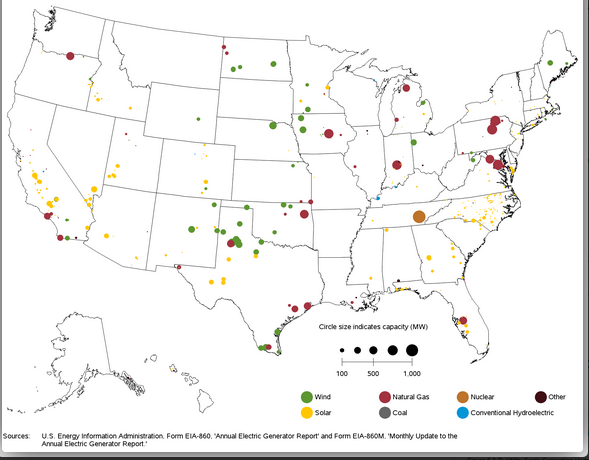posted by S. Patricia Batres-Marquez on Wednesday, July 6, 2016
Solar energy is a renewable energy derived from radiant light and heat from the sun which can be harnessed by using different methods or technologies for several purposes such as generating electricity, heating or cooling spaces in buildings, and heating water for home, commercial, or industrial uses.
Two of the main solar energy technologies are: photovoltaics (PV) and concentrating solar power (CSP). PV converts sunlight directly into electricity by using panels. Once the sunlight hits the solar panels, photons from the sunlight are absorbed by the cells in the panels, generating an electric field through the layers and causes electricity to flow.
CSP converts heat from the sun to provide electricity for large power plants. The power plants, solar power thermal plants, that employ this technology use the sun’s rays as a heat source to boil water. A large turbine is spun by the steam from the boiling water, which drives a generator to produce electricity. These power plants use the sunlight as a heat source instead of fossil fuels.
According to the U.S. Energy Information Administration (EIA), by end the of November 2015 the United States had over 20,000 megawatts (MW) of solar generating capacity from technologies including utility-scale PV, distributed generation solar PV systems (rooftop solar), and solar thermal installations. California had almost half of the U.S. solar electricity generating capacity with 9,976 MW, followed by Arizona (2,103 MW), New Jersey (1,235 MW), North Carolina (1,070 MW) and Nevada (1,010 NW).
Federal and state policies have positively impacted the solar industry growth. An example of such policies is the federal Solar Energy Investment Tax Credit (ITC), which has been amended several times, most recently in December 2015 when the expiration date was extended. ITC currently allows a 30% federal tax credit claimed against the tax liability of eligible parties (residential, commercial and utility investors in solar energy property). As Figure 1 shows, the solar industry has been expanding in recent years. Utility-scale solar plants generated less than 1% of the total energy generated from all renewable sources in 2012 compared with 4.8% in 2015. The EIA forecast indicates that electricity generated in solar plants will represent 5.8% and 7.6% of the total electricity from all renewable sources in 2016 and 2017, respectively.
Figure 1. Electricity Generation from Renewable Sources (Utility-Scale Plants) and Percent Solar Electricity of Total Electricity from All Renewable Sources.

Overall, the EIA projects that electricity from utility-scale renewable sources will represent 15.1% and 15.4% of the total electricity generated in the U.S. from all sources in 2016 and 2017, correspondingly. On the other hand, solar plants are expected to account for 0.9% of the U.S. total electricity from all sources in 2016 and 1.2% in 2017. Electricity from utility-scale renewable plants in 2016 will increase 11.3% from the previous year. The growth will be driven mainly from expected new installations of wind and solar plants, as well as an increase of hydro-electric power generation. In addition, the latest EIA’s Short-Term Energy Outlook (June 2016) indicates that from 2015 to 2017 utility-scale solar PV capacity is expected to expand by about 14 gigawatts (GW). This growth is led by California, Nevada, North Carolina, Texas, and Georgia (see, map below).
Figure 2. Utility-Scale Generating Units Planned to Come Online from May 2016 to April 2017

Source: U.S. Energy Information Administration (EIA)
Federal and state policies have aided increases in the U.S solar industry since 2012. The recent extension of federal Solar Energy Investment Tax Credit has the potential to further expand the solar energy industry. As solar technologies become more available, production costs may decline making them more competitive compared to other technologies.